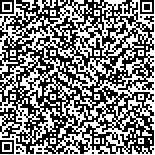下载中心
优秀审稿专家
优秀论文
相关链接
摘要

全球变暖是当前国际社会的热点话题,温度廓线是大气热力状态的重要参数,准确高效地获取其时空分布信息是天气预报和气候变化研究的前提。与传统的地面观测方式相比,卫星探测数据具有高空间、时间分辨率的优势,为气象观测提供了数据支持。本文分别针对星载红外高光谱传感器3种常见观测模式(天底、掩星及临边观测模式)下的国外7个传感器代表(IMG、AIRS、IASI、HALOE、TES、MIPAS、ACE-FTS)及国内大气探测卫星(风云系列和高分系列)在参数、性能和用途等3个方面进行介绍,得出当前国际上天底观测可提供垂直方向1 km内温度产品精度小于1 K,TES临边观测模式可提供的对流层温度廓线产品精度最高可达0.5 K,均满足NWP精度要求,可有效的用于天气预报及气候变化研究;由辐射传输方程出发,对气温廓线反演的3种常用方法(统计回归、物理及人工神经网络反演)的基本原理、特点及发展历程进行了对比分析。同时,就温度廓线反演算法的关键问题及可能的解决方案进行了阐述;并对误差(平滑、模型参数及测量误差)产生及其传播原理进行系统地归纳总结。最后,提出现阶段气温探测过程中存在的问题。
关键词:
星载红外高光谱传感器 大气温度廓线 辐射传输 关键问题 误差分析Global warming is a hot topic in recent years as it can lead to temperature increasing, more frequent extreme weather, etc. Temperature is an important parameter to characterize the thermodynamic state of the atmosphere. The distribution of temperature affects the radiation flux of long-wave and short-wave, which in turn plays a significant role in the balance of global energy radiation budget. Therefore, understanding the spatial and temporal distribution of atmospheric temperature and its long-term variation comprehensively are essential for our research on weather forecast and climate change research.Presently, many ground-based and space borne sensors have been developed for temperature detection. Space borne sensors observe temperature by nadir viewing, occultation detection, or limb sounding. Space borne sensors have a high spatial and temporal resolution, which can provide sufficient data for scientific research. In this paper, seven foreign hyperspectral sensors (IMG, AIRS, IASI, HALOE, HALOE, TES, MIPAS, ACE-FTS) and domestic sensors (the series of FY and GF) are introduced in terms of parameters, performance, and application. These sensors acquire the information of atmospheric parameters through the radiation in infrared band. Occultation and limb observation are less affected by the underlying surface and have high vertical resolution and sensitivity, such as HALOE, MIPAS, ACE-FTS, TES, etc. So far, the accuracy of temperature products of nadir observation (AIRS and IASI) is less than 1K with a vertical direction of 1 km, and the accuracy of temperature products in the troposphere by TES limb observation can reach 0.5 K. All of them meet the requirement of Numerical Weather Prediction and can be used widely in weather forecasting and climate change research.The accuracy of temperature profiles of the Feng Yun series is comparable to that of IASI, but the spatial and temporal resolution are needed to be improved. The radiation transfer is the basis for trace gas inversion. Firstly, we introduced the radiation transfer equations of nadir viewing, occultation detection, or limb sounding. The radiation transfer process of limb observation is similar to that of occultation detection, in which line-of-sight reaching a down-looking sensor is entirely above the ground. Then, three retrieval methods (statistical regression, physical inversion, and artificial neural network inversion) of temperature profile are described in terms of principles, characteristics, and development history. The advantages and disadvantages of them are also compared. The statistical regression method is simple and efficient, but the accuracy is relatively lower, which is usually used as the a priori profiles for the physical algorithm. The accuracy of physical inversion is improved obviously, but the retrieval process of is complex and the a priori profiles are needed in physical inversion. The artificial neural network method can acquire the temperature profile accurately and efficiently, but a variety of samples are needed for training. Meanwhile, the key problems that the influence of the cloud, aerosol, and surface reflectivity on temperature retrieval are described, and the possible solutions are then given, respectively. The generation and propagation of error (smoothness, model parameter, and measurement error) in temperature retrieval are summarized. Finally, the problems existing in atmospheric temperature inversion are proposed.

